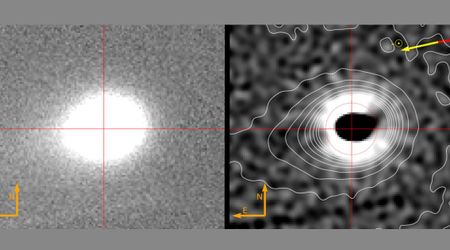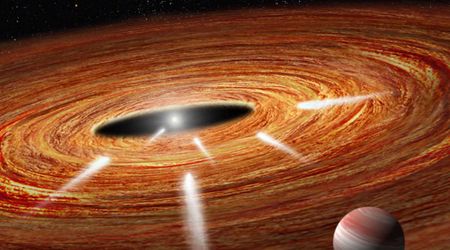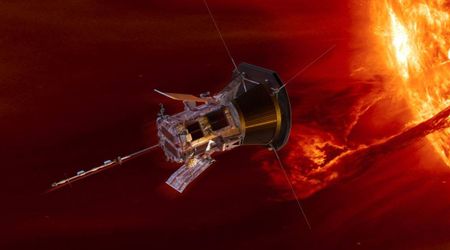NASA astronaut shares mind-boggling time-exposure image of lightning from the ISS

NASA astronaut Donald R. Pettit aboard the International Space Station has released a stunning new image, offering an unprecedented perspective on Earth's atmospheric phenomena. The captivating photograph, a 25-minute time exposure, showcases sequential lightning flashes illuminating the planet below, set against the backdrop of arcing stars in deep space, according to Don Pettit on Reddit.
Star trail from the ISS showing sequential lightning flashes on Earth below streaking stars in deep space.
— Don Pettit (@astro_Pettit) July 6, 2025
In the foreground, the station's solar panels blur with movement to the right of the Russian laboratory module.
Star trails straighten into thin lines in the direction of… pic.twitter.com/fSfK6TXVoR
The remarkable image also provides a glimpse of the orbiting laboratory itself, with the station's solar panels appearing blurred due to movement, positioned to the right of the Russian laboratory module. The subtle complexities of orbital mechanics are evident in the star trails: those aligned with the ISS's path appear as straight lines, while others to the right form distinct arcs, a result of the station's continuous rotation as it circles Earth. This dynamic perspective is a testament to the ISS's incredible speed, traveling approximately 250 miles and completing an orbit around our planet every 90 minutes, as per NASA. Pettit captured the photograph using a Nikon Z9 camera equipped with an Arri-Zeiss 15mm lens. It was created by stacking multiple 30-second exposures in Photoshop, utilizing a T1.8 aperture and ISO 500 setting, as mentioned in Donald's X post.
Image taken with Nikon Z9, Arri-Zeiss 15mm lens, individual 30 second exposures stacked into 25 minute time exposure with Photoshop, T1.8, ISO 500
— Don Pettit (@astro_Pettit) July 6, 2025
This latest visual marvel builds upon Pettit's extensive experience in astrophotography from orbit. It echoes a similarly mesmerizing image he captured on March 16, 2012, which depicted stars leaving streaks of light in concentric circles from the vantage point of the International Space Station. Both composites were meticulously created by stacking 30-second exposures from a mounted camera aboard the orbiting laboratory, as mentioned on NASA.

The practice of capturing Earth's phenomena from orbit extends beyond striking visuals and public engagement. For instance, fellow NASA astronaut Nichole "Vapor" Ayers recently shared in an X post a remarkable photo taken on July 3, showing a Transient Luminous Event (TLE), specifically a sprite, appearing above a thunderstorm over Mexico and to the southwest. Sprites are high-altitude electrical discharges triggered by intense lightning activity in the storms below. Astronauts, with their unique above-the-clouds vantage point, provide crucial imagery that scientists use to better understand the formation, characteristics, and relationship of these mysterious TLEs to thunderstorms. This demonstrates how images captured by astronauts like Pettit and Ayers are not just aesthetically pleasing but also serve a vital scientific purpose in observing and analyzing our planet's dynamic atmosphere.
Just. Wow. As we went over Mexico and the U.S. this morning, I caught this sprite.
— Nichole “Vapor” Ayers (@Astro_Ayers) July 3, 2025
Sprites are TLEs or Transient Luminous Events, that happen above the clouds and are triggered by intense electrical activity in the thunderstorms below. We have a great view above the clouds, so… pic.twitter.com/dCqIrn3vrA
While images like Ayers and Pettit's might seem to require specialized equipment and space travel, they paradoxically highlight the growing accessibility of astrophotography. Many believe capturing breathtaking celestial phenomena, from the sprawling Milky Way to a vibrant nebula or an eclipsed moon, demands hours of effort, costly gear, and remote travel. This often deters newcomers. However, the reality is that anyone with a camera, even a smartphone, can delve into astrophotography, per NASA. Pettit's orbital captures, though taken from a unique vantage point, serve as a testament to the power of long-exposure techniques and careful image stacking, principles that are fundamental to astrophotography and achievable by enthusiasts on Earth. His work inspires countless individuals to look up and capture the wonders of the night sky for themselves, demonstrating that compelling astrophotography is within reach.









